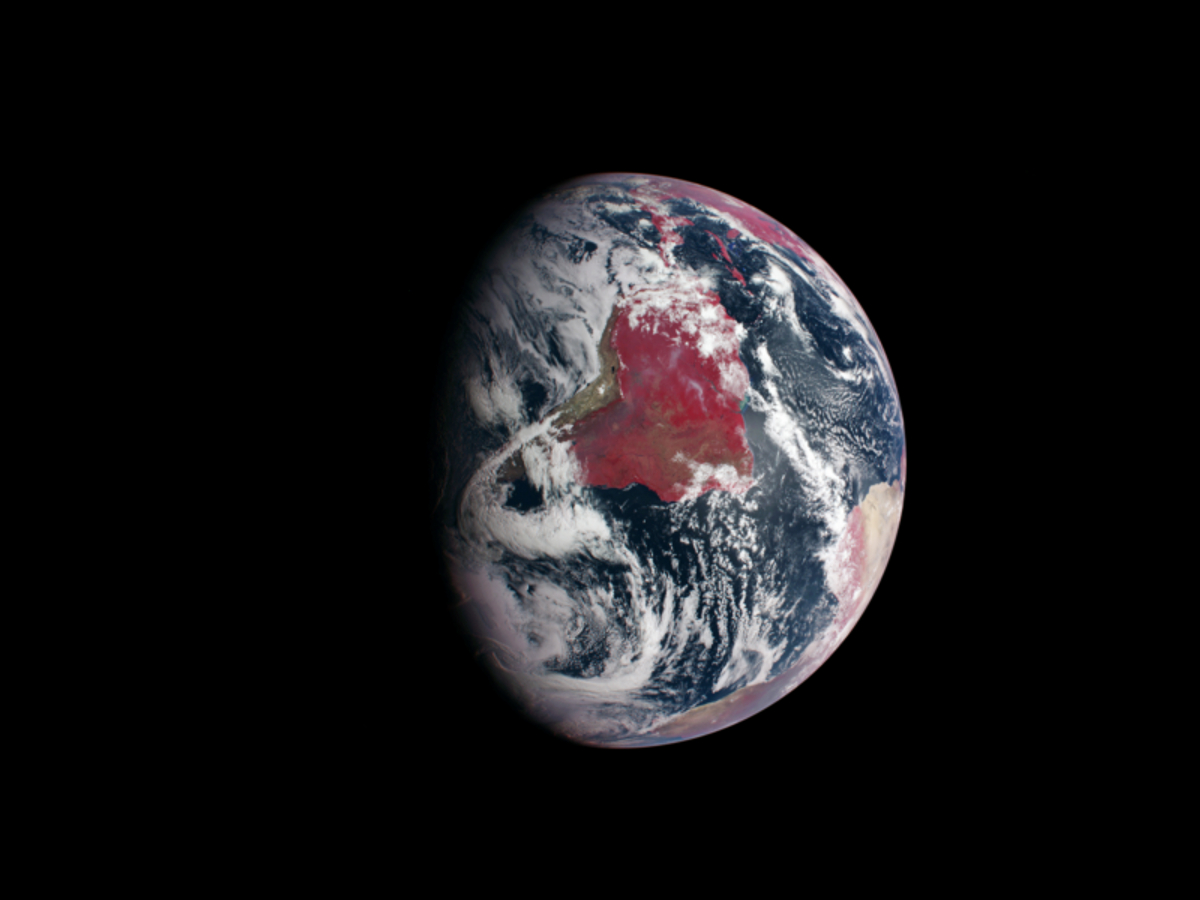Launched nearly a decade ago on Aug. 3, 2004, NASA's Mercury Surface, Space Environment, Geochemistry, and Ranging spacecraft (MESSENGER) zipped off on its seven-year mission through the inner solar system toward Mercury. Before it left for Mercurial territory it observed something much closer to home: Earth. One year after its launch MESSENGER took this image.
Though the red you see may suggest something more sinister, it is far from a representation of impending doom. In fact this red is actually growth, plant growth. According to NASA the image is of South America along with parts of Africa and North America, and was taken from the "Mercury Dual Imaging System’s wide-angle camera." NASA explains why the camera's image shows up red:
"[IT] records light at eleven different wavelengths, including visible and infrared light. Combining blue, red, and green light results in a true-color image from the observations. The image substitutes infrared light for blue light in the three-band combination. The resulting image is crisper than the natural color version because our atmosphere scatters blue light. Infrared light, however, passes through the atmosphere with relatively little scattering and allows a clearer view."
Plants reflect near-infared light (more than others like red or green), and infared light shows up red in the image. The healthier the plant the more near-infared light it'll reflect. So according to NASA, "bright red indicates dense, growing foliage." NASA is also quick to point out that this is not a photo, but rather a satellite image:
"Though they may look similar, photographs and satellite images are fundamentally different. A photograph is made when light is focused and captured on a light-sensitive surface (such as film or a CCD). A satellite image is created by combining measurements of the intensity of certain wavelengths of light, both visible and invisible to human eyes."



Shares